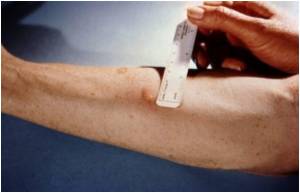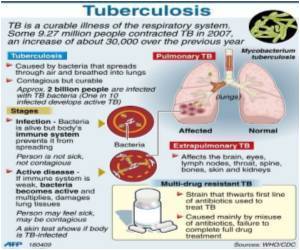
"It's difficult to predict patient outcomes, and this is a real problem."
To combat this problem, Ramilo and Asuncion Mejias of the Research Institute at Nationwide Children's Hospital, are using microarray technology to develop blood profiles in patients specific to infectious diseases.
"Each infectious agent, be it a virus or a bacterium, interacts with human immune cells in unique ways by triggering proteins on white blood cells," said Mejias.
"We can identify patterns among the white blood cell's activated proteins and identify a unique 'signature' for each infectious agent.
"This technology allows us to see the whole picture of infection using a single blood sample, which is a really powerful tool for the clinic," he said.
Advertisement
The study examined and compared blood drawn from patients in London, England and Cape Town, South Africa who had active TB, latent TB or who did not have TB.
Advertisement
"The study shows for the first time that the transcriptional signature in blood correlates with extent of disease in active TB patients," said Ramilo.
"It validates the idea that this transcriptional signature is an accurate marker of TB infection."
The team also found that a subset of latent TB patients had signatures similar to those in active TB patients.
"The signature of active TB, which was observed in 10 to 20 percent of latent TB patients, may identify those individuals who will develop disease, but longitudinal studies are needed to assess this," said Ramilo.
The transcriptional signature was diminished in active TB patients after two months and completely extinguished by 12 months after treatment.
"These findings suggest that the blood transcriptional signature of active TB patients could be used to monitor how well a patient's treatment is working," said Ramilo.
Mejias says that this study highlights the power that gene expression microarray technology could bring to the diagnosis and treatment of infectious diseases.
"It seems that we are developing a tool that can not only diagnose infectious diseases, but also indicate severity and eventually predict which patients are at risk for developing advanced symptoms. These capabilities are desperately needed in order to improve how patients recover from infections," said Ramilo.
These findings were published in Nature.
Source-ANI









